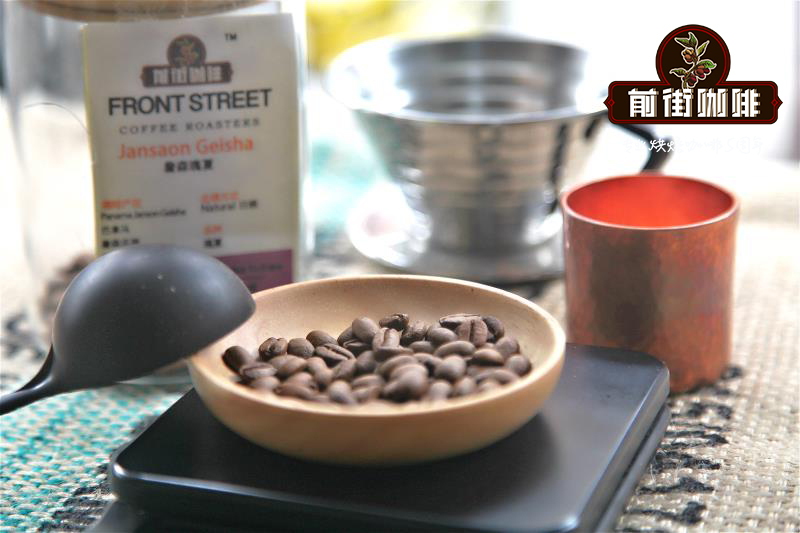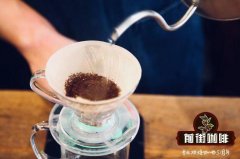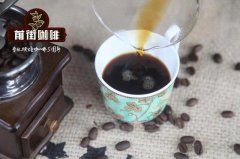What is the correct water for hand-brewed coffee? how much coffee powder do you use to make hand-brewed coffee?

Professional coffee knowledge exchange more coffee bean information please follow the coffee workshop (Wechat official account cafe_style)
Hardness and softness of water quality
Soft water (soft water) refers to water that contains no or less soluble calcium and magnesium compounds, while hard water is the opposite. The softened hard water refers to the softened water obtained when the content of calcium salt and magnesium salt is reduced to 1.0-50 mg / L. Although the hard water can be softened temporarily by boiling, boiling water is not used to extract coffee.
Soft water is a standard indicating the "hardness" of water quality, specifically the content of calcium and magnesium ions in a liter of water. In accordance with World Health Organization (WHO) standards:
In daily life, we often see scale formation on the inner wall of the kettle after using for a long time, because the water we use contains a lot of inorganic salts, such as calcium and magnesium salts. These salts are invisible to the naked eye in water at room temperature. once they are heated and boiled, many calcium and magnesium salts precipitate in the form of carbonate, which form scale close to the pot wall. The water quality in Xiamen, where Maoye is located, is relatively soft, so the kettle or coffee machine is not prone to scale, but according to friends in the north, even if the new kettle is boiled with tap water a few times, it is possible to produce scale on the kettle wall. This should be a typical difference in water quality between the north and the south.
The content of calcium and magnesium in water is usually expressed by the index of "hardness". The hardness of 1 degree is equivalent to 10 mg of calcium oxide per liter of water. Water below 8 degrees is called soft water, water above 17 degrees is called hard water, and water between 8 and 17 degrees is called moderate hard water. Rain and snow water are soft water, while springs, deep wells, sea water, rivers and lakes all belong to hard water.
Of course, there are some water with high content of calcium and magnesium ions, but there is no scale formation, this is because these calcium and magnesium ions exist in the form of chloride, they are soluble, so they can not be precipitated when heated. Therefore, the absence of scale on the inner wall of the kettle does not mean that the water does not contain calcium and magnesium compounds, nor does it mean that its water quality belongs to soft water.
The effect of soft water and hard water on coffee is self-evident. Drinking soft water and hard water alone has a great difference in taste, not to mention the effect of water quality on the flavor of coffee. Soft water tastes softer, so the coffee brewed is also round and soft, but its sweetness is often not as high as that made by hard water. when there is an appropriate amount of calcium in the water, it will enhance the sweetness of coffee to a certain extent. however, if the calcium content is too high, the taste will not be soft and the touch will not be good. Not only in the difference between touch and sweetness, soft water will make the flavor of coffee less clear than hard water, because when extracting coffee, if there is a certain amount of calcium ions and carbides, the flavor can be cleverly balanced by these minerals. produced at the right amount of coffee powder, scale and temperature.
Therefore, not only soft water can produce a better taste, the corresponding soft and hard moderate water quality may be a better water for coffee extraction.
The so-called live water extraction is the process of adjusting the flow of water to pass through the coffee powder at a uniform speed to allow flowing water to extract coffee ingredients. For example: if two filter cups, one filled with sand and the other filled with stone, of the same quality, we inject water into both cups at the same time and ask: which one will seep faster? The answer is obviously stone, yes, the quality of stone is relatively large, there are more gaps between particles, and the water will penetrate better, and the state before coffee powder brewing is sand. If it is not fresh or the brewing technique does not adapt to the undulating state of coffee, it will always be sand, the speed of water infiltration is very slow, resulting in stagnant water, soaking for too long, the taste is miscellaneous and astringent. So fresh beans in the right way, the good gap formed between the particles during steaming, so that the sand state of coffee powder into stone, is one of the prerequisites for water to evenly extract good taste from coffee.
The powder-to-water ratio depends on the roasting degree of the coffee, usually 1:15, but the water temperature will change slightly.
END
Important Notice :
前街咖啡 FrontStreet Coffee has moved to new addredd:
FrontStreet Coffee Address: 315,Donghua East Road,GuangZhou
Tel:020 38364473
- Prev

Can illy coffee powder be made by pressing pot? introduction to the use of illy coffee powder
Professional coffee knowledge exchange more coffee bean information please follow the coffee workshop (Wechat official account cafe_style) illy coffee flavors are divided into medium roasting, deep roasting and low caffeine. Deep-baked coffee has a strong taste and bitter taste, which is suitable for buyers who like strong taste. The taste will be heavier, bitter and full-bodied, so it is suitable for making espresso (Espresso).
- Next

What is the impact of the slow flow of hand-brewed coffee? what is the reason for the slow flow of hand-brewed coffee?
Professional coffee knowledge exchange more coffee bean information please follow the coffee workshop (Wechat official account cafe_style) when the coffee powder is deposited in the filter cup, what kind of action can make it the most uniform release of coffee, to achieve a more unified extraction of the whole process? The answer, of course, is that most coffee powder can be turned at the same temperature, the same stirring, the same permeable angle and the same turning.
Related
- Beginners will see the "Coffee pull flower" guide!
- What is the difference between ice blog purified milk and ordinary milk coffee?
- Why is the Philippines the largest producer of crops in Liberia?
- For coffee extraction, should the fine powder be retained?
- How does extracted espresso fill pressed powder? How much strength does it take to press the powder?
- How to make jasmine cold extract coffee? Is the jasmine + latte good?
- Will this little toy really make the coffee taste better? How does Lily Drip affect coffee extraction?
- Will the action of slapping the filter cup also affect coffee extraction?
- What's the difference between powder-to-water ratio and powder-to-liquid ratio?
- What is the Ethiopian local species? What does it have to do with Heirloom native species?

